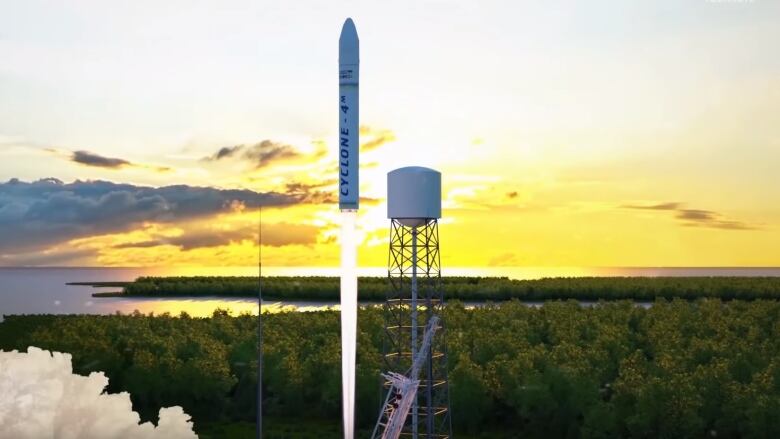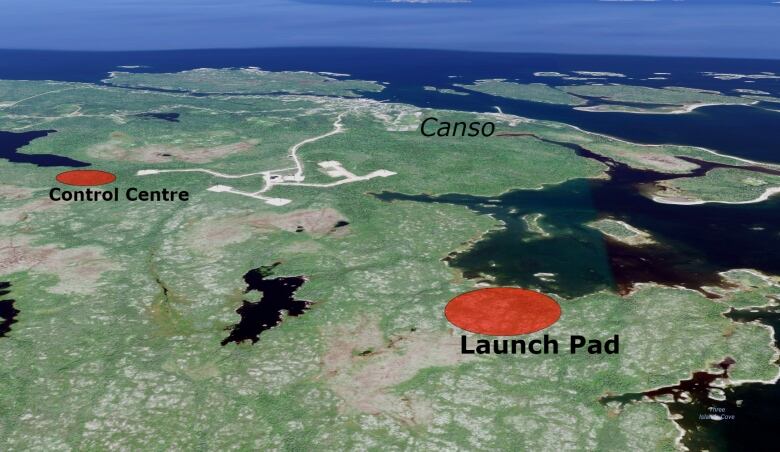Canso spaceport project gets environmental approval, with conditions
Company will need to submit plans on worst-case scenarios and air emissions

The company aiming to build a rocket-launching facility near Canso, N.S., received approval from the province's Environment Department on Tuesday.
Environment Minister Gordon Wilson said he was satisfied any significant environmental effects of the Maritime Launch Services (MLS) project could be mitigated with compliance to the department's conditions.
"I think we've made the right decision on ensuring that all the environmental impacts and the safety of the people in the area have been looked at and addressed in the terms of conditions of this approval," said Wilson.
"Our staff did a very good job in engaging consultants who were understanding of this type of activity."
The companyaims to builda private, commercial rocket launch site to sendsatellites into space for use in near-earth imaging, communications and scientific experiments.
MLS submitted a focus report to the department in March, after the department decided it needed more information on the project last year.
Concerns about hydrazines, chemicals that will be used as rocket propellant, were among the main issues raised bythe department.
Worst case-scenarioplans required
Among the conditions, MLS will be required to submit information on expected air emissions of pollutants during regular operations and worst-case scenarios, including the maximum distance downwind that would need to be evacuated.
Exposure to high vapour concentrations of hydrazines can cause convulsions or death, while repeated exposure to lower concentrations can damage the liver and kidneys, the MLS focus report noted. Hydrazines are classified as probable human carcinogens by the U.S. Environmental Protection Agency.
The company will also need to submit plans for accidents, emergencies and worst case-scenarios, including launch failures.
A launch failure at ground zero would throw debris within a 500-metre radius, burn all the vegetation and soil in the immediate vicinity of the launch pad and potentially cause secondary explosions and fires.
No 'showstoppers,'CEO says
Stephen Matier, president and CEO of MLS, said 90 per cent of the conditions were things the company planned on doing anyway as they begin to design the spaceport.
"I think there's some real potential for that overlap and really don't see any showstoppers in that extensive list," Matier told CBC'sMainstreet Cape Breton.
Maiter said the hydrazines are only used as propellants in space, not during takeoff. Transporting and handling the propellant and in-flight launch failures pose a risk for spills of the material the department calls "highly toxic."

Management plans for noise, wildlife, environmental protection, transportation of hazardous materials and site rehabilitation will also need to be submitted to the department.
MLS will also be required to reimburse the department for costs to ensure compliance, up to $100,000 annually, throughout the life of the project.
In addition, it needs to give a security fund to the department, which would be payable to the province in the event of non-compliance.
The amount of the suretywill be determined at a later date, said Wilson.
The project would see one rocket launched in the first year, 2021, with a maximum of eight per year after that.
With files from Jean Laroche and Mainstreet Cape Breton












_(720p).jpg)


 OFFICIAL HD MUSIC VIDEO.jpg)
.jpg)



























































































